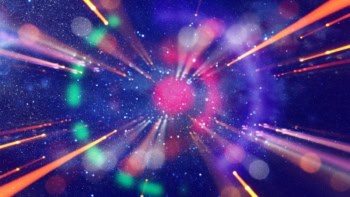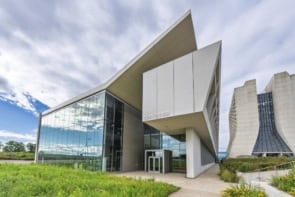An international collaboration of physicists working at the Relativistic Heavy Ion Collider (RHIC) at the Brookhaven National Laboratory in the US says that it has come closer than ever before to re-producing matter as it existed in the first millionth of a second after the Big Bang - a “quark-gluon plasma” of free quarks, antiquarks and gluons. The results were presented at a special colloquium in Brookhaven today.
As the universe cooled, free quarks and gluons combined into protons and neutrons, which then bound together to form light nuclei. Researchers at the CERN laboratory in Switzerland claimed to have created a quark-gluon plasma (QGP) in February 2000, but their results were inconclusive because the plasma existed only fleetingly.
The RHIC teams compared the results of collisions between beams of gold nuclei with results of collisions between gold nuclei and a beam of deuterons – nuclei containing just a proton and a neutron. When a gold nucleus collides with another gold nucleus the constituent protons and neutrons are thought to melt together and form a QGP. However, when a gold nucleus collides with a deuteron it should remain intact.
The Brookhaven researchers were able to observe this difference in behaviour by comparing the number of quark jets generated in the respective collisions. Quark jets are produced when a pair of energetic quarks is knocked loose from within a proton or neutron and each of these loose quarks produces a jet of ordinary particles. As expected, the scientists observed fewer quark jets from gold-gold collisions than from the deuteron-gold collisions. They believe that this is because the energy of the “missing” jets is being “quenched” by the dense QGP.
“This is a very exciting result and clearly indicates we are on the right track,” said Thomas Kirk, Brookhaven’s associate lab director for high-energy and nuclear physics. “But the case for having created a quark-gluon plasma is not yet closed.”
CERN will rejoin the race to create the first QGP when the ALICE heavy-ion experiment turns on at the Large Hadron Collider in 2007. Collision energies at ALICE will be about 30 times higher than those at RHIC.



